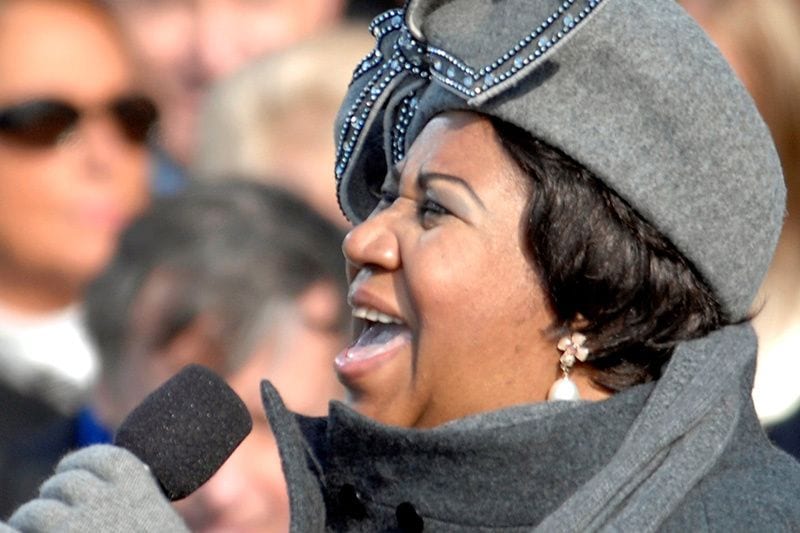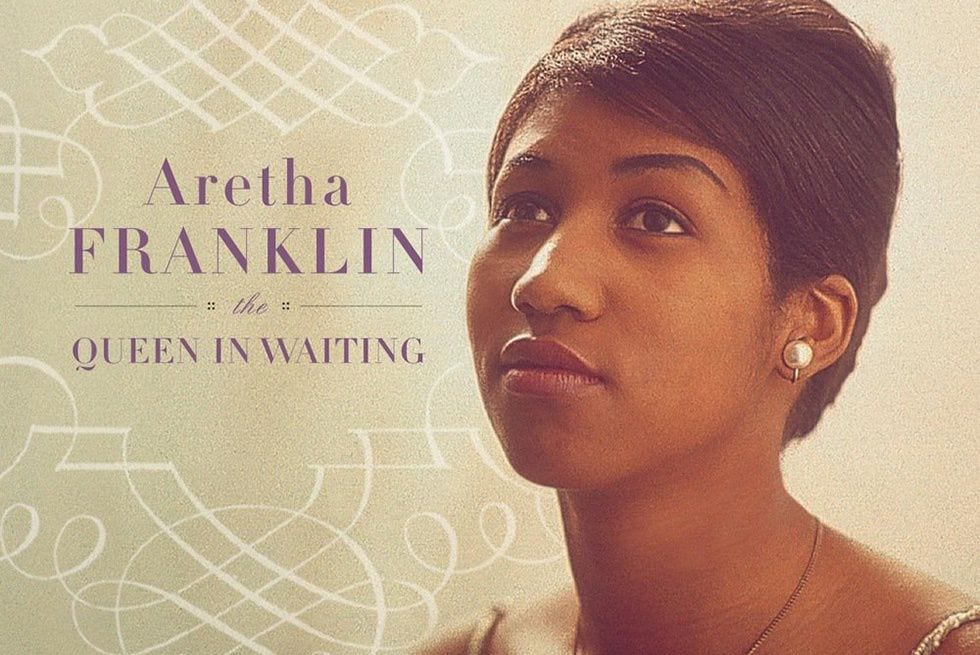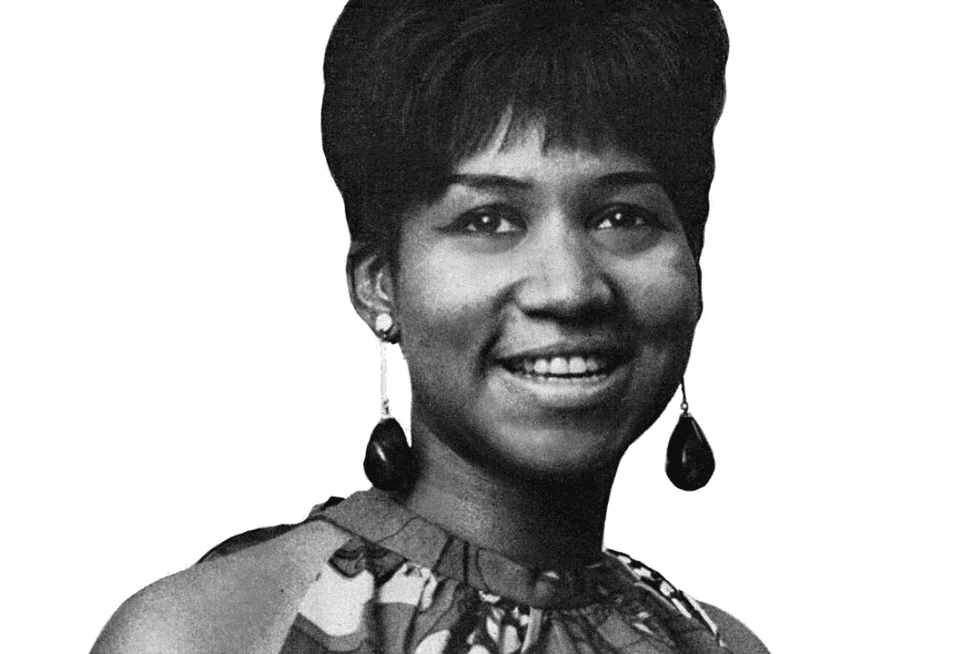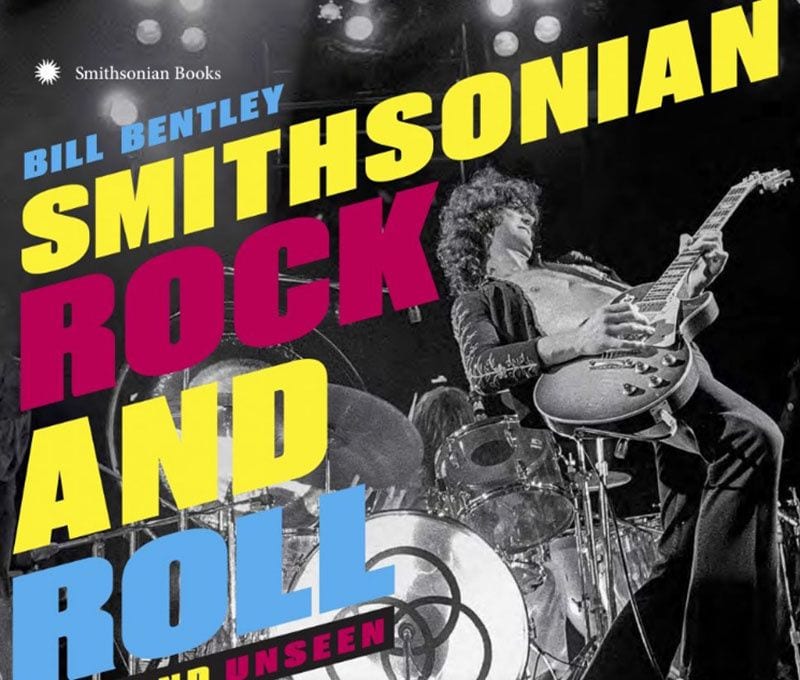
Aretha Franklin: Observations from the Court of the Queen
Aretha Franklin rose to her regal status in spite of record labels' mishandling her art.

Aretha Franklin rose to her regal status in spite of record labels' mishandling her art.

The Columbia recordings of Aretha Franklin between 1960 and 1965 are not her best, but they show us an artist learning her craft and gathering the tools that would change American music.

The concept album that is Aretha's Gold follows the chronology of Aretha Franklin's hits, all released in 1967 and 1968, apex years of the decade not just in terms of numbers but also as an apogee of its cultural and political zeitgeist.

The late 1990s were an embarrassing time for the female singing star, at least if we look back with the advantage of 20 years retrospect at the TV show VH1 Divas. The initial idea seemed respectable, but again this was back in an era when the network (and its sibling MTV) actually featured music. How about a program featuring the greatest female singers of our time? How about slapping a label on the program under which all these women would labor for the remainder of their careers? They were Divas, powerhouse singers who owned the stage with force, rage, and determination. Nobody else was there when it was their turn to shine. Dependable names like Whitney Houston, Cher, Tina Turner rolled through their numbers with expected flourishes. High points were reached, and thrills came when expected.
The problem with the Diva label is that the generation at that time, and those who followed, were expected to live with its demands. Divas were temperamental, tunnel-visioned, and perhaps heartless. The 1999 live performance of Aretha Franklin’s “(You Make Me Feel Like) A Natural Woman” was a perfect example of too much too soon, clashing styles and forces booming through their corner of the stage. Mariah Carey, Celine Dion, Gloria Estefan, Franklin, and Carole King (the song’s co-writer) sang the words, projected their voices, but the effect was numbing. The same can be said for the all-star tribute to Franklin two years later when the idea of subtlety (even in a classic stomper like “Respect”) was lost in favor of star turns from guest performers Mary J. Blige Jill Scott, Nelly Furtado, and many others.
The passing of Aretha Franklin on Thursday, 16 August 2018, is a devastating loss not just to the world of mass-marketed Divas but to the balladeer, the chanteuse, and the singer who knew her way around keyboards in a gospel song (“Bridge Over Troubled Waters”), country (“Gentle on My Mind”) or show tunes (“Somewhere”.) However complimentary it may have seemed when dreamed up by VH1 marketers, the idea of Divas comes with more than a tolerable degree of sexism. To have power as a female, through subtlety or volume, automatically came with restrictions. You might lay claim to being a Diva with no time for amateurs, but you still need to stay in your lane.
A brief survey of ten songs randomly selected through a six-year period (1968-1974) of Aretha Franklin’s 61-year recording career (starting with her debut live album of gospel standards Songs of Faith in 1956 and going through to 2017’s A Brand New Me) should bring light to the fact that there were many more levels to this singer/ pianist/ activist/ songwriter/ interpreter than justifiable claim to original Queen of Soul Divahood.
This cover of the Young Rascals song takes a simple pop number to church. Listen to the Sweet Inspirations backing vocals (Carolyn and Erma Franklin) bring in “Sunday, Sunday” (like the Mamas and the Papas “Monday Monday”) and Aretha reference Sam Cooke with “You Send Me”. Nothing that sounds this simple can be easy to make.
People (1968) This one, from the 1964 Broadway play, opens quietly, with a lush string arrangement and steady percussion. Franklin slides dangerously low, perilously high, builds with the power of the song in a way unimaginable if the listener was only familiar with Barbra Streisand’s signature version. Franklin doesn’t take this one to church so much as bring it for a walk through the park on a summer weekend afternoon, the sun shining, couples in love, everything in its place.
While the purpose of this tribute is to look at studio versions, an interesting duet Franklin performed with middle of the road vanilla white Andy Williams as a guest on his TV show testifies to the remarkable way she had of embracing convention on her terms, from her perspective. Skip to perhaps the one minute mark of this clip and watch her walk away from Williams and own the stage. He makes a hopeless attempt to come back, but it’s no longer his song. He surrenders because he has no choice. It’s painfully corny to watch this mix of Williams with Franklin, a mix that obviously doesn’t work. It’s embarrassing to think that Franklin may have had no choice but to appear on shows like this to make a living and appeal to a white audience as well as a wide audience, but she made it her own.
The Burt Bacharach/Hal David catalog worked because the songs were stable, malleable, willing and able to bend. Franklin takes this song to places unimaginable if it had just stayed with Dionne Warwick or Herb Alpert. She soars in and leaves no listener unconvinced that there’s a need being unfulfilled.
Of course, it doesn’t hurt that the first thing we hear in this recording of the classic from the Band is Duane Allman’s swampy slide guitar. He wanders throughout, making a place for himself between verses. We think it might stay slow, brooding, but the horns come in, the backing vocals, the tambourine. It won’t match what the Staple Singers did with this song, but Franklin puts her stamp on this slice of soul/gospel/rock.
How do you take the gospel aspirations of the original Simon and Garfunkel standard from just a year earlier and re-shape it into what it should have been all along? Listen to the opening. There’s bass, organ, electric piano, a chorus imploring “Don’t trouble the water / Still water runs deep.” Aretha responds: “I know that.” She plays an instrumental verse on that piano. She comes in, eventually, after almost two minutes. The Muscle Shoals Rhythm section always knows what time it is and they know what to do here. King Curtis comes in on saxophone. Billy Preston was already there on organ and Franklin herself on piano. Where the original final verse (“Sail on Silverbird…”) seemed an afterthought, Franklin embraces all the hope contained in this pain. Troubles have come, but I will always be there to save you.
Here is another example, from the same sessions that yielded the above song, where the stripped down power overwhelms without shattering. Listen to the power of the bass, the swirling organ throughout, the gospel stomp about halfway through until the end. Franklin abandons any notion that this should be an elegiac farewell (as the Beatles original always sounded, smothered in its Phil Spector strings production style) and instead renders it a celebration. I’ve traveled this road with you. We may say our farewells now, but remember it’s been a good ride. Remember the role I played in us getting here.
Again, this is a prime example of the way Franklin was able to extract the simple elements of gospel that were in the original and spread it throughout the recording. Elton John’s original was certainly infused with an appreciation of the form, but compare it to this version, and it comes off as more flirtation than anything else. Paul Simon, Paul McCartney, and Elton John were tourists in gospel. Aretha Franklin was a permanent resident.
Franklin takes the lead here, on piano and everywhere else. Quincy Jones is here. Phil Woods is playing alto sax. The strings come, and the tears start probably ninety seconds into this tale of hope, this testimony to perseverance and stability anywhere but here and now. We know this Stephen Sondheim/Leonard Bernstein West Side Story song from Barbra Streisand and scores of other Broadway and American standard singers (even a heartfelt version from Tom Waits), but few versions managed to soar like this one.
How do you end an exploration of a great American singer’s repertoire and range when you know it’s just a small slice of a larger pie? Do you discount over four decades that followed this recording? Do you dismiss the “Nessun Dorma” operatic performance from the 1998 Grammy Awards when she filled in for an ailing Luciano Pavarotti? No, you stay with the songs. You go to one of the better tributes to the life of a traveling singer, Leon Russell’s “A Song For You”, recorded in 1974 and heard here in an undeniably strong 2011 performance, aided by fellow Rock and Roll Hall performers Dennis Edwards and Ronald Isley. This one takes its time. There’s no ascension towards a climax, no release, because of everything here about the catch, the pursuit of the moment. Many greats recorded this song, including Ray Charles. Here, Aretha Franklin sings it for you.
It’s almost comforting to think that somebody with the stature and importance of Aretha Franklin will no longer have to live in this national climate that has turned so vicious and unapologetically racist, aided and abetted from the seats of power where she sang the National Anthem less than a decade ago, where white nationalists and unrepentant Nazis are allowed a seat at the table of ideological give and take. Think back in fondness at the hat she wore while singing at President Barack Obama’s January 2009 inauguration and flashback to 1939 and Marian Anderson, an African-American woman denied permission, by the Daughters of the American Revolution, (DAR), to sing to an integrated audience at their Constitution Hall in Washington, DC. The ghosts of such injustices will never fail to swirl through our collective consciousness. Aretha Franklin was more than just an easily identifiable Diva, the Queen of Soul, or a legendary singer. She was The Singer.

Aretha Franklin is a living legend, and I shouldn’t have to spend too long trying to convince you of it. Any opportunity to hear Franklin’s voice and music is a gift. Because of this though, there is an abundance of opportunities to do so. The universal appreciation of Franklin has encouraged a slew of greatest hits albums to be sent out to the masses. Franklin’s latest release, A Brand New Me: Aretha Franklin with the Royal Philharmonic Orchestra, manages to stand out from this swarm of albums, though. In this collection, Franklin’s classic material is reworked, and the backing music that once was is replaced with arrangements performed by the Royal Philharmonic Orchestra.
This quality definitely sets A Brand New Me: Aretha Franklin with the Royal Philharmonic Orchestra apart from similar releases, but it curiously adds a challenge in that it has to compete with the original versions of the songs on the album, on top of the competition it faces from other greatest hits releases. On the whole, it stacks up pretty well against the latter in regards to album composition. Most of the songs on the album are lesser-known hits, providing a good opportunity to become acquainted with a wider breadth of Franklin’s discography. The album does contain some of the more obvious entries like “Respect”, “Think”, and “A Natural Woman (You Make Me Feel Like)”, but it also contains many lesser-known numbers that newer or more casual Franklin fans might not have had any experience with before like “A Brand New Me”, “Until You Come Back to Me (That’s What I’m Gonna Do)”, and “Oh Me Oh My (I’m a Fool for You Baby).”
This inclusion of lesser-known songs works to the albums advantage because it detracts from the album’s competition with the original tunes as many listeners won’t have any knowledge of the original to compare to. Furthermore, most of the included songs are fantastic. Franklin’s greatest hits are huge for a reason, but there isn’t usually a huge difference in quality between those and the other included songs. The only song that appears to be out of place is a cover of the Beatles’ divisive song, “Let It Be”, which sounds mawkish and campy to my ears.
For the most part, the songs are reimagined decently well, and while they’re unlikely to surpass the original versions by any measure, they serve as a fine alternative. “Oh Me Oh My (I’m s Fool for You Baby)”, for example, becomes 30 seconds longer in this edition, a welcome change that allows us to bask in the glorious ending and in Franklin’s spectacular vocal performance. Not all changes are so welcome though. “I Say a Little Prayer” on the other hand gained a promising intro, but ultimately disappoints due to its replacement of the original background vocals, vocals which were infinitely more expressive than the resulting ones.
It’s fitting that the album was released solely under Franklin’s name and not co-billed with the Royal Philharmonic Orchestra as Franklin is indisputably the star of the collection. The Royal Philharmonic Orchestra gives an adequate performance, but it does sound somewhat uninspired, almost as if no one wanted to get in Franklin’s way. The intent to keep the focus on her was right, but her performance is so commanding already; no self-imposed handicaps are needed to achieve this feat. After all, it just seems wrong to surround Franklin’s revelatory vocals with safe performances.
At the 1998 Grammys, Franklin, who had suffered years of criticism aimed at her aged voice, stood in for a sick Pavarotti by singing Puccini’s “Nessun Dorma” and proved to all but the most stubborn elitist opera fans that, even far past her prime, her musicality and expressivity could not be bounded by genre or vocal degradation. At that moment, Franklin adapted her usual vocal techniques and style to fit a genre of music relatively unbeknownst to her. On this album, she sings, accompanied by an orchestra just as she was in 1998, but now it’s the orchestra’s turn to adapt to Franklin’s gift. Though this album has its fair share of flaws, it’s yet again another (welcome) reminder of the universality that Franklin possesses. In that sense, it’s a perfect tribute honoring such a boundless and essential artist.

This new book featuring concert photos taken by fans is a stylish, interesting, and absorbing, yet somewhat incomplete look at the history of popular music.











